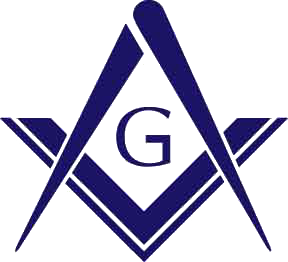 by Alexander Saslow, Senior Deacon
by Alexander Saslow, Senior Deacon
I would like to speak a moment about π.  That strange Greek Letter, as opposed to the dessert, which represents a ratio that crops up all over the place in Geometry, and other sciences.  It is found in the inner working of the circle, and the triangle.  It helps determine the frequency of pendulums, and of waves.  If I had to choose one quantity that could be called most influential to our understanding of the physical universe, I would choose PI.
PI is an irrational number, meaning that it can never be fully calculated in decimals, for it continues forever. Â We often use 3.14 for PI, although 3.1415926 is much more accurate. Â The digits go on and on.
I recently came across an interesting piece of our ritual.  It states some facts about the dimensions of a particular object.  Something about the dimensions seemed odd to me.  It finally occurred to me that the dimensions mentioned in our ritual are mathematically impossible, for they rely on the value of PI being exactly 3.  So I asked myself: “How long have we known the value of PI?† It was my assumption that our ritual merely predated the discovery.
The earliest historical mentions of the ratio in question come from three sources: The Ancient Egyptians, the Babylonians, and the Tanakh, what many call the Old Testament.
(1 Kings 7:23) says And he made a molten sea, ten cubits from the one brim to the other: it was round all about, and his height was five cubits: and a line of thirty cubits did compass it about.  Assuming the sea is circular, which “round all about†would seem to imply, this puts the ratio between the diameter of a circle, and its circumference at exactly 3.  In modern geometry, however, we know that this ratio should be equal to PI.  So there clearly was a time when PI was thought to be 3.
The Babylonians were known for their incredible works of architecture in the form of monuments, and had determined what we call the 47th Problem of Euclid, or the Pythagorean Theorem, about one thousand years before Pythagoras himself.[1]Â It is safe to say, then, that they were mathematically adept. Â What did they use for this all important ratio?
The record is clear that they used exactly 3 as well for much of their work. Â Although a tablet found near Susa, and dating from about 1900-1680 BCE, which describes the ratio as being 3.125.[2]
The Ancient Egyptians are also well known for their architectural prowess. Â According to some papyrus dating to around 1650 BCE, Ancient Egyptians seemed to have used 3.16049. [3]
Of the three documents discussed, two used values of PI much more accurate than 3, although not the value that we use today. Â The Tanakh is much younger than the other two, by at least a thousand years, if not more. Â It would seem to be reasonable that in that time the knowledge of PI would have made its way into the minds of the ancient Israelites. Â But for some reason that I have not yet divined, the men that put ink to paper to make the Tanakh were unaware of what had been, at that point, a well established fact.
It is possible that 3 was used because it is so much more convenient than the more accurate values.  In real life, for the items that were being made 3 would work just as well as the 3.16049 the Egyptians used.  Maybe it was thought that the “real†value of PI was only practical when discussing theory.
Archimedes of Syracuse (287-212 BCE) used some groundbreaking theoretical mathematics using circles and polygons to determine that PI was a number within a range. Â Apollonius (250-175 B.C.) worked upon that to determine that PI was 3.1416, remarkably close to the 3.14159 that we use. [4]
It wasn’t until 1706, however, that the equation we still use to determine PI was determined.  John Machin, building upon the work of others, came up with the following: [5]
(Ï€/4) = 4 arctan (1/5) – arctan (1/239)
Modern Freemasonry is often thought to have started in 1717, with the birth of the first Grand Lodge. [6]
My study of the history of PI as complete as I cared to make it, I was still left with my initial question: Â Why does our ritual use a value of PI that is wrong, and has been known to be wrong for significantly longer than the existence of the Fraternity?
I still have no answer.


